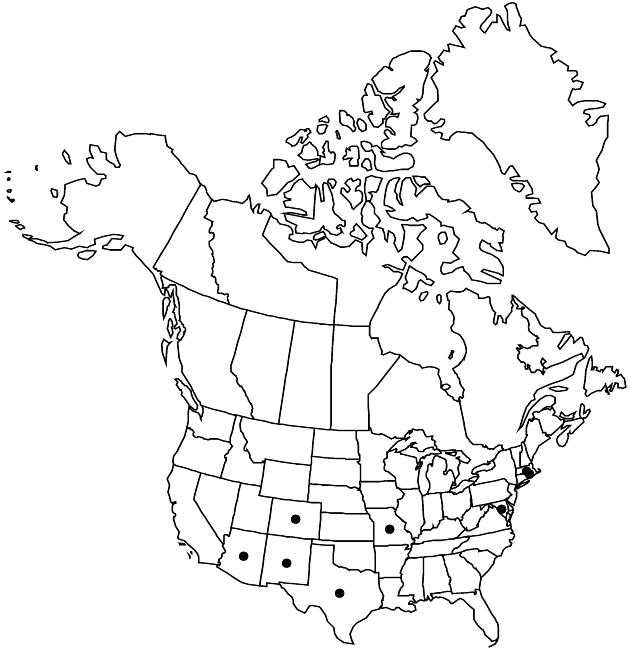Difference between revisions of "Cosmos parviflorus"
Syn. Pl. 2: 477. 1807.
FNA>Volume Importer |
imported>Volume Importer |
||
| (6 intermediate revisions by 2 users not shown) | |||
| Line 7: | Line 7: | ||
|year=1807 | |year=1807 | ||
}} | }} | ||
| − | |basionyms={{Treatment/ID/ | + | |basionyms={{Treatment/ID/Basionym |
|name=Coreopsis parviflora | |name=Coreopsis parviflora | ||
|authority=Jacquin | |authority=Jacquin | ||
| + | |rank=species | ||
| + | |publication_title=Pl. Hort. Schoenbr. | ||
| + | |publication_place=3: 65, plate 374. 1798 | ||
}} | }} | ||
|synonyms= | |synonyms= | ||
| Line 26: | Line 29: | ||
|elevation=100–3000 m | |elevation=100–3000 m | ||
|distribution=Ariz.;Colo.;Md.;Mass.;Mo.;N.Mex.;R.I.;Tex.;Mexico. | |distribution=Ariz.;Colo.;Md.;Mass.;Mo.;N.Mex.;R.I.;Tex.;Mexico. | ||
| − | |discussion=<p>Within the flora area, Cosmos parviflorus is native only in the southwestern United States.</p> | + | |discussion=<p>Within the flora area, <i>Cosmos parviflorus</i> is native only in the southwestern United States.</p> |
|tables= | |tables= | ||
|references= | |references= | ||
| Line 35: | Line 38: | ||
-->{{#Taxon: | -->{{#Taxon: | ||
name=Cosmos parviflorus | name=Cosmos parviflorus | ||
| − | |||
|authority=(Jacquin) Persoon | |authority=(Jacquin) Persoon | ||
|rank=species | |rank=species | ||
| Line 50: | Line 52: | ||
|publication year=1807 | |publication year=1807 | ||
|special status= | |special status= | ||
| − | |source xml=https:// | + | |source xml=https://bitbucket.org/aafc-mbb/fna-data-curation/src/2e0870ddd59836b60bcf96646a41e87ea5a5943a/coarse_grained_fna_xml/V19-20-21/V21_503.xml |
|tribe=Asteraceae tribe Heliantheae | |tribe=Asteraceae tribe Heliantheae | ||
|subtribe=Asteraceae (tribe Heliantheae) subtribe Coreopsidinae | |subtribe=Asteraceae (tribe Heliantheae) subtribe Coreopsidinae | ||
Latest revision as of 20:12, 5 November 2020
Plants 30–90 cm, glabrous or sparsely pubescent. Leaves: petioles ca. 0.5 cm; blades 2.5–6.5 cm, ultimate lobes to 1 mm wide, margins usually spinulose-ciliate, apices acute to obtuse. Peduncles 10–30 cm. Calyculi of spreading to reflexed, linear-oblong to narrowly lanceolate bractlets 6–9 mm, apices acute. Involucres (3–)5–10(–15) mm diam. Phyllaries erect, oblong, 5–8 mm, apices acute. Ray corollas white to rose-pink or violet, laminae cuneate-obovate, 5–9 mm, apices dentate. Disc corollas 4–5 mm. Cypselae 9–16 mm, setulose; pappi of 2–4 erect awns 2–3 mm. 2n = 24.
Phenology: Flowering summer–fall.
Habitat: Open or forested slopes and canyons, sometimes in disturbed and cultivated areas
Elevation: 100–3000 m
Distribution

Ariz., Colo., Md., Mass., Mo., N.Mex., R.I., Tex., Mexico.
Discussion
Within the flora area, Cosmos parviflorus is native only in the southwestern United States.
Selected References
None.